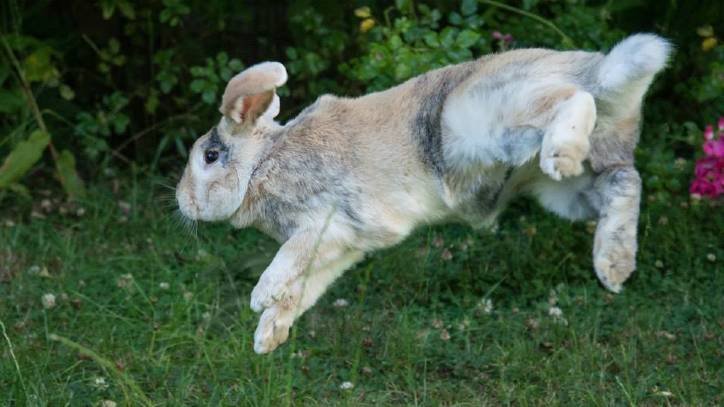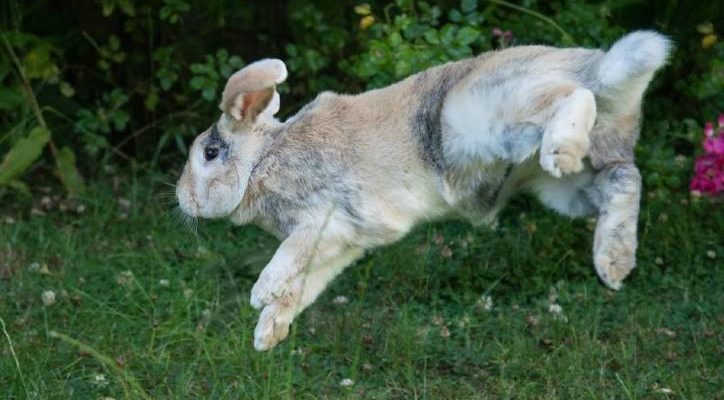
Rabbits are fascinating creatures full of quirks and personality. They communicate through body language and sounds, which can be a bit puzzling at first. It’s like having a pet who speaks a different dialect. So, whether you’re a seasoned rabbit owner or thinking about welcoming one into your life, let’s dive into their unique behaviors, from thumping and binkies to what these signals really mean.
What Is Thumping?
Thumping is one of the most noticeable behaviors you’ll see from your rabbit. When they thump their hind legs against the ground, it can sound surprisingly loud. Basically, it’s like your rabbit’s version of shouting “Hey, pay attention!” But what are they trying to communicate?
Rabbits often thump as a warning sign. It usually means they sense danger or something unusual in their environment. For instance, if there’s a sudden noise—like a vacuum cleaner or a dog barking—your rabbit might thump to alert you and signal that they feel threatened. They’re letting you know it’s time to keep your eyes open!
If your rabbit thumps frequently, it might be worth observing what triggers it. Is there a particular sound that scares them? Or maybe it happens when they see unfamiliar visitors? Understanding these triggers can help you create a more comfortable environment, allowing your bunny to feel safe and secure.
The Joy of Binkies
Ah, the binky! If you’ve ever seen a rabbit take a flying leap and twist in mid-air, you’ve witnessed one of the happiest moments in a bunny’s life. A binky isn’t just a cute little hop; it’s a celebration. Imagine a child jumping for joy—binkies are rabbits’ way of showing pure happiness.
When your rabbit performs a binky, it generally means they’re feeling relaxed and comfortable in their surroundings. It could be after a good meal, playtime, or just the excitement of being around you. Watching them leap and twist can be a delightful experience, making you feel like you’re witnessing a tiny acrobat in action.
If your rabbit starts binkying around you, take it as a compliment! They’re expressing their joy and contentment. If you’ve just introduced a new toy or given them fresh greens, you might see them binky even more. It’s their way of saying, “Life is good!”
Why Do Rabbits Dig?
Digging is another behavior you might notice. While you might assume it’s just for fun, rabbits dig for a few reasons. Picture them in the wild; digging helps them create burrows for safety. Domesticated rabbits often still have that instinct.
If your rabbit is digging in their cage, it could mean they’re trying to get comfy or are bored. Providing them with various toys, tunnels, or even designated digging areas can help satisfy this natural urge. You might also see them digging at the carpet or furniture—time to redirect that energy!
To help you understand their digging habits better, consider providing a box filled with shredded paper or hay. It’ll give your rabbit a safe space to explore and dig around without destroying your home.
Body Language: What Do Their Ears Mean?
Rabbits are masters of sending signals through their ears. The position of their ears can tell you a lot about how they’re feeling. Let’s break it down.
– Ears Up: When their ears are perked up and facing forward, it means they’re curious or alert. They’re ready to explore or investigate something new in their environment.
– Ears Relaxed: If their ears are relaxed and hanging by their sides, your rabbit is likely feeling calm and at ease. You might see this when they’re lounging or enjoying your company.
– Ears Back: This is a sign of irritation or fear. If you see your rabbit flattening their ears against their back, it’s a warning that they might be feeling threatened.
Paying attention to your rabbit’s ear positions can help you respond to their needs better. If you notice them looking uneasy, it’s a good idea to assess the situation and offer reassurance.
The Significance of Grooming
Grooming is another important behavior among rabbits. Not only do they groom themselves, but they also groom each other. This act is like a bonding ritual among rabbits. It shows trust and affection, similar to how friends might hug or comfort each other.
If your rabbit grooms you, don’t be surprised—they’re showing you love! Some might even nibble at your clothes or hands gently. While it’s sweet, be careful not to encourage habits that could lead to chewing on things that aren’t safe for them.
Provide your rabbit with plenty of opportunities to groom themselves. Regular brushing, especially for long-haired breeds, helps maintain their coat and keep them comfortable. Plus, it strengthens your bond as you spend quality time together.
Understanding Their Noises
Rabbits can be surprisingly vocal, and they use different sounds to convey various messages. Just like humans, they have their own “language” of noises. Here’s a quick guide to some common sounds and what they might mean:
– Purring or Growling: If your rabbit is purring when being petted, it’s a good sign—they’re enjoying it! However, if you hear a low growl, it might mean they’re feeling threatened.
– Whining: This often indicates they want something, like food or attention. It’s like the rabbit version of a child asking for a snack.
– Chirping: Some rabbits make a chirping sound, which can indicate happiness or excitement. It’s a rare and unique noise, so cherish that moment!
Understanding these sounds can help you respond better to your rabbit’s needs and feelings. You might even find yourself chatting back to them, making your bond even stronger!
Socializing with Your Rabbit
Rabbits are social animals, and they thrive on interaction. If you’re bringing a rabbit into your home, be prepared to engage with them. They benefit from daily socialization and mental stimulation, whether through playtime, gentle petting, or just hanging out together.
To encourage bonding, consider spending time on the floor with your rabbit. Let them come to you, so they feel safe and comfortable. Toys like tunnels or interactive puzzles can also keep their minds sharp and entertained.
It’s essential to respect their boundaries, though. Some rabbits may take time to warm up, and it’s crucial to let them set the pace. If your rabbit is shy or skittish, be patient. Soon enough, you’ll have a little buddy who can’t get enough of your company!
In conclusion, understanding rabbit behavior is all about observing and learning. Pay attention to their thumps, binkies, and ear positions, and take the time to bond with your furry friend. As you become more in tune with their needs and emotions, you’ll create a happy, loving environment for both of you to enjoy. Just remember, every rabbit is unique, and the more you learn about their quirks, the deeper your friendship will grow!

